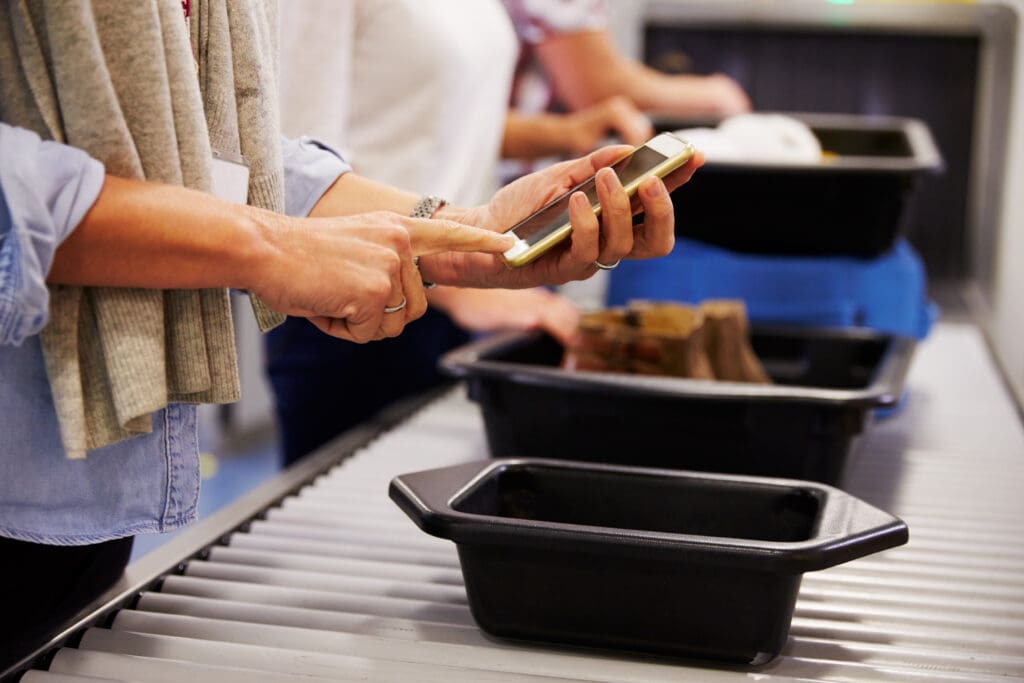While airports are often filled with excitement and anticipation, they’re also hotspots for digital threats.
As travellers gear up for holidays, it’s easy to let your guard down, but cybercriminals are counting on that.
Whether you’re waiting for a delayed flight or killing time during a layover, your tech habits could be putting your personal information at serious risk.
Shern Ng, Head of Product Management and Tech Expert at Nomad eSIM, shares three crucial things to never do at an airport, no matter how tempting they may seem.
1. Don’t charge your phone at public USB stations
Shern says: “Those free USB charging ports scattered around airports might seem like a lifesaver when your battery hits 5%, but they’re a hidden danger.
“It’s called ‘juice jacking.’ Hackers can tamper with public charging stations or even leave behind malicious USB cables, turning a simple top-up into a data breach. When you plug in, a compromised USB port can install spyware, steal files, or inject malware onto your device without your knowledge.”
Pro tip: Use a portable power bank or bring your own USB power adapter to plug directly into a wall socket. It’s a simple swap that keeps your data safe while still keeping your phone alive for boarding passes, maps, and texts.
2. Don’t let your devices auto-connect to Wi-Fi
“Most phones are set to connect automatically to known Wi-Fi networks. A lot of the time it’s convenient, but in crowded places like airports, it can turn into a risk that can easily be avoided.
“Hackers can easily set up rogue Wi-Fi networks that look legitimate with names like ‘Free Airport Wi-Fi’ or even ones spoofing the real thing, like “Free Airport Wi-Fi” or “Starbucks_Guest”. If your device auto-connects without you realizing, you could be handing over your private data to cybercriminals. It is important to be vigilant.”
Pro tip: To stay safe, turn off auto-join for networks in your settings and use mobile data or a secure eSIM connection when possible. Better yet, skip public Wi-Fi entirely and opt for mobile data or a secure eSIM that gives you encrypted, carrier-grade connectivity on demand.
3. Don’t leave Bluetooth and AirDrop turned on
“On iPhones and Macs, Bluetooth and file-sharing features like AirDrop are often left on by default, but leaving them open in a busy airport can be risky.
“When Bluetooth or AirDrop is active, strangers nearby can try to send you unsolicited files, trick you into pairing, or even exploit security vulnerabilities on your device. In some cases, attackers use social engineering to prompt you to accept a malicious file disguised as something innocent.”
Pro tips:
- Before you head to the airport, switch Bluetooth and AirDrop to ‘off’ or ‘contacts only’ to reduce your exposure. It’s one less way your phone can be used against you while you travel.
- Use MFA (multi-factor authentication): Especially when logging in from new locations or devices during travel.
- Update before you go: Make sure your OS and apps are up to date, as updates often include critical security patches.
- Turn off unnecessary location sharing: Not only does this save battery, but it limits background data sharing that could be exploited.
Traveling should be exciting, not stressful. By being aware of these digital pitfalls, you can enjoy your trip while keeping your information safe.
As Shern puts it, “Just as you’d keep an eye on your passport or wallet, you should protect your digital identity too. Because once it’s compromised, the damage can follow you long after your flight has landed.”


